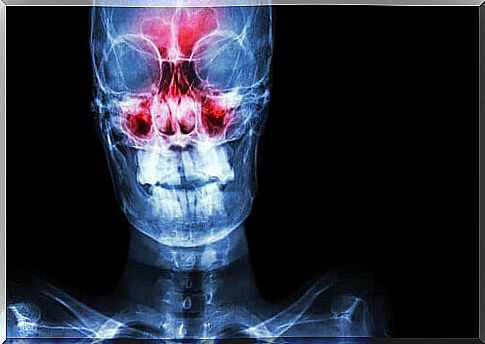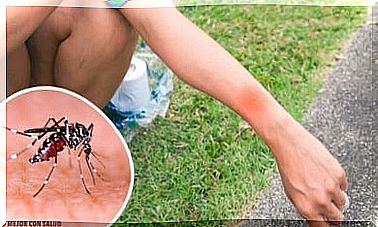Symptoms Of Sinusitis: From Cause To Diagnosis

We speak of sinusitis when the paranasal sinuses become inflamed. These are two small, hollow spaces that air passes through so it can circulate between the bones of your nose. There are several symptoms of sinusitis that you can observe.
The sinuses are divided into four groups: the maxillary sinuses, the ethmoid sinuses, the frontal sinuses, and the sphenoid sinuses. If everything is normal, air moves freely through these cavities.
However, when the sinuses become inflamed, it becomes more difficult to breathe and other symptoms of sinusitis may also appear, such as pain that can be very intense.
When your sinuses are healthy, there is no mention of bacteria or other organisms. In this case, the mucus can flow through your nose without any problems.
When too much mucus builds up or the paranasal sinuses become blocked, it creates a good source of nutrition for different types of microorganisms. And this, unfortunately, can lead to sinusitis.
The Cause of Sinusitis
Too much mucus or a blockage in the paranasal sinuses can be caused by a variety of factors that lead to sinusitis symptoms. The most common are the following:
- Allergies and colds, which contribute to the production of large amounts of mucus
- Abnormal bony prominences in the nose
- Deviating septum
- The presence of nasal polyps
- Problems with the nose hairs, when they are unable to clear mucus

There are several risk factors that can contribute to the development of sinusitis or at the very least stimulate the symptoms of sinusitis.
The main ones are: cystic fibrosis, hay fever or allergic rhinitis, a weakened immune system, tonsil hypertrophy, physical pressure and finally the habit of smoking.
Symptoms of Sinusitis and the Different Types of Sinusitis
There are also different types of sinusitis that can be distinguished from each other based on how long they last. In total, four basic classes can be identified:
- Acute sinusitis: lasts up to four weeks
- Sub-acute sinusitis: lasts four to 12 weeks
- Chronic sinusitis: lasts more than 12 weeks
- Recurrent Sinusitis: Multiple Attacks Within the Same Year
There are certain symptoms that are common to all types of sinusitis. The main ones are:
- Loss of the sense of smell or developing bad breath
- Cough, this is usually more intense at night
- Fatigue
- Pain
- Headache
- Pressure in the area around the nose
- Pain behind the eyes
- Toothache
- Facial Sensitivity
- Stuffy nose
- Running nose
- A sore throat
With acute sinusitis, symptoms appear about a week after you catch a cold. In chronic sinusitis, the symptoms are roughly similar. In this case, however, they are usually milder and last longer.
How Sinusitis Is Diagnosed
Usually an expert makes a diagnosis based on a nose examination. The doctor will shine a light into the nose to look for polyps or signs of inflammation.
It is also common for the doctor to apply pressure to the area to check for pain. Pain is usually an indication that someone is suffering from sinusitis.

To get the correct diagnosis, a doctor will usually order one or more of the following tests: a rhinoscopy, a computed tomography or CT scan, or an MRI. X-rays rarely provide reliable results.
In addition, a doctor may also request other complementary tests.
Think cytological tests, blood tests to evaluate the health of your immune system and tests to look for allergies, the function of the nose hairs or cystic fibrosis.
Prognosis and Complications
When sinusitis is treated early, the prognosis is generally very favorable. In addition, the patient is likely to make a full recovery if he receives the right treatment and the right care is maintained.
If there are recurrent attacks, this is often a sign that the cause of the disease has not been treated correctly.
Complications in case of sinusitis are uncommon. When they do occur, they should be taken very seriously. The most common complications are:
- Asthma, derived from chronic sinusitis.
- Vision problems that can arise when an infection spreads to the eye. This can lead to loss of vision or in very severe cases even blindness.
- Blood clots or aneurysms. Sinusitis can affect the veins around the sinuses. In these cases, blood flow is interrupted and you are at risk of having a stroke.
- This can happen if the inflammation continues around or near the brain.
In addition, other less common complications can arise, such as bone infections (osteomyelitis) and skin infections in the eye area. Any complications should be treated by a doctor as soon as possible.









